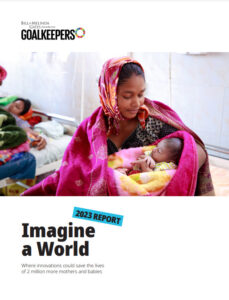
When a mother dies during childbirth, the future dies with her.
The world doesn’t just lose everything she is and will be. We also—all too often—lose her child. The chance of a baby reaching their first birthday drops to less than 37 percent when their mother dies during childbirth.
This happens 800 times a day. Once every two minutes, a mother dies from complications due to childbirth. By the time you finish reading this introduction, it will happen again.
Two decades ago, that wasn’t the way progress was heading.
The early 2000s were a boom moment for virtually every measure of human well-being. Poverty rates. Educational achievement. Longevity. Things were improving. But nowhere was progress faster or more thrilling than with the health of mothers and their children.
This didn’t happen by accident. In 2000, world leaders drafted the Millennium Development Goals (MDGs), which included ambitious targets for the health of mothers and newborns. In response, big new organizations helped accelerate progress, like Gavi, the Vaccine Alliance and the Global Fund to Fight AIDS, Tuberculosis, and Malaria. For the first time in human history, basic lifesaving health care was made available to hundreds of millions of people: AIDS medications, contraceptives, childhood vaccines, bed nets to prevent malaria.
It was a thrilling moment—until it ended. And when COVID-19 hit, the virus overwhelmed the clinics and health workers that had helped women deliver their babies safely. Since then, progress has continued to stall.
Every year, approximately 5 million children die before they reach their fifth birthday. Nearly another 2 million babies never take their first breath—they’re stillborn. Although these deaths have continued to decline since the mid-2010s, they’re not declining fast enough, especially for infants. Most child deaths—74 percent—happen during a baby’s first year.
Meanwhile, for new mothers, progress has hit a brick wall. Globally, maternal mortality rates have remained stubbornly static over the past eight years, and in some countries, from the United States to Venezuela, they have risen.